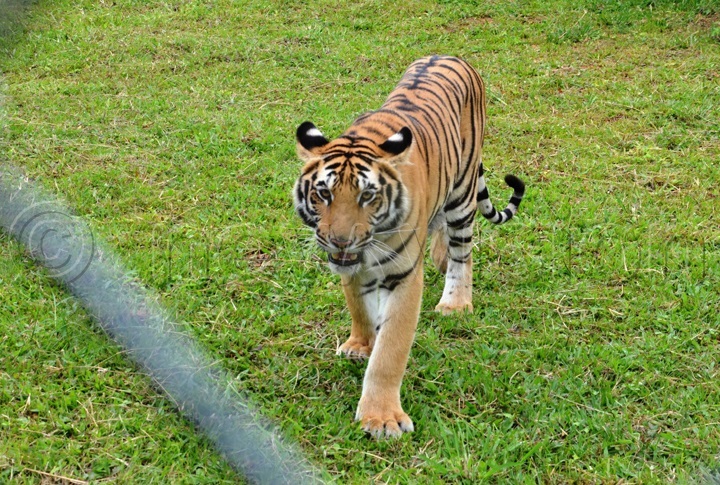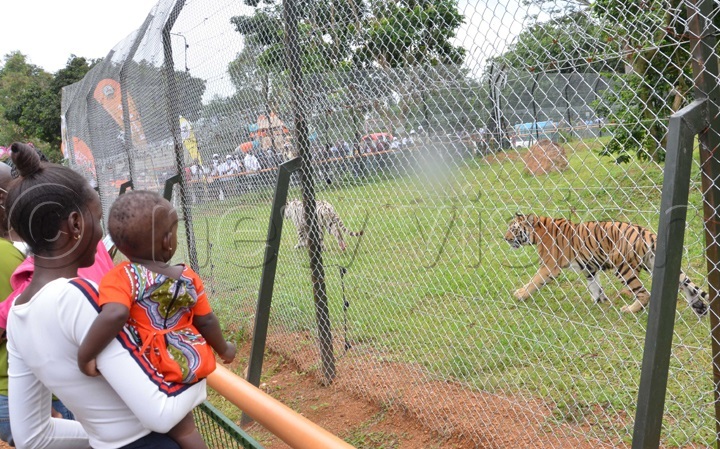Tiger pair makes debut at UWEC
Dec 04, 2020
The two tigers which came from South Africa are yet to be christened

Over half a century since Tigers were last seen at the then Entebbe Zoo — the only place they've ever been known to live in Uganda — a pair of 'fresh new' tigers made their debut at the Uganda Wildlife Conservation Education Centre (UWEC) on Thursday afternoon.
The largest mammals in the cat family were imported into the country on March 7 and were since then, undergoing mandatory institutional quarantine and medical examination until they were deemed fit to occupy their newly constructed holding facility at UWEC.
Dr James Musinguzi the UWEC executive director earlier noted that Uganda becomes the first East African country to accommodate tigers, which last existed in the 1970s.
He further stated that conservation is a global noble cause whereby, even though animals such as tigers do not exist in Africa, it is incumbent for conservation bodies like UWEC, to educate the people on how to conserve such animal species.

"Over the last century, subspecies of tigers have dwindled from eight to five due to hunting and logging. Therefore, this pair is a dawn of hope which fulfills our conservation roles of education, research, and recreation," expressed Musinguzi while unveiling the pair.
Making their first step out of the cages to the spacious exhibition site, the tigers were treated to applause from the regulated guests, all of who ogled in awe and excitement. Like a baby-making first steps, the big cats could be seen trotting carefully, as though afraid of stepping in the dark-green short grass, as their new compound looked.
They later aimed for the suspended beef which was tied up on the feeding area, attracting another loud applause from the guests. Yes, the tigers are back in Uganda. The pair from South Africa was exchanged for 25 monkeys from Uganda.
"We just met their shipping fee of $2,000 from South Africa to Uganda," intimated Musinguzi.

The two tigers which are yet to be christened, consume 10kg of meat every day, putting their feeding cost at sh150,000 daily.
While unveiling the tiger exhibit on Thursday, Godfrey Kiwanda the state minister for tourism, wildlife and antiquities noted that Uganda had added on its diversity of tourism products hence implored all people to visit UWEC for information and experience with the new cat species.
Meanwhile, the minister revealed that Uganda lost more than $2b in tourism, as a result of the COVID-19 pandemic.
He, however, expressed determination to have the tourism industry revamped by not only diversifying tourism products but also effecting strict observance of the standard operating procedures to control the further spread of the COVID-19 pandemic.

According to Kiwanda, the government is executing part of a plan where hotel owners shall be availed with a fund to cater for some of their costs, as a way of keeping them afloat in the tourism industry.
In the same regard, unlike in the past where gate collections at UWEC would be spent at the centre, now all monies collected are remitted to the consolidated fund. In return, the government will be advancing the centre with all the money for feeding animals among other costs.
"Our budget this financial year 2020/21 is sh13.11b out of which, sh6.46b is for recurrent expenditure whereas sh6.65b is for capital development," stated Musinguzi.

About tigers
Tigers are territorial, generally solitary but social animals that only survive in Asia's wild. Everywhere else in the world, tigers are kept in captivity.
As of 2015, the global wild tiger population was estimated to number between 3,062 and 3,948 mature individuals.
The Tiger has a muscular body with powerful forelimbs, a large head, and a tail that is about half of its full body.
Male tigers vary from the total length from 8ft-12ft and weigh between 90kg-300kg. Females have a total length ranging from 6ft-9ft whereas they weigh 65kg to 167kg.
